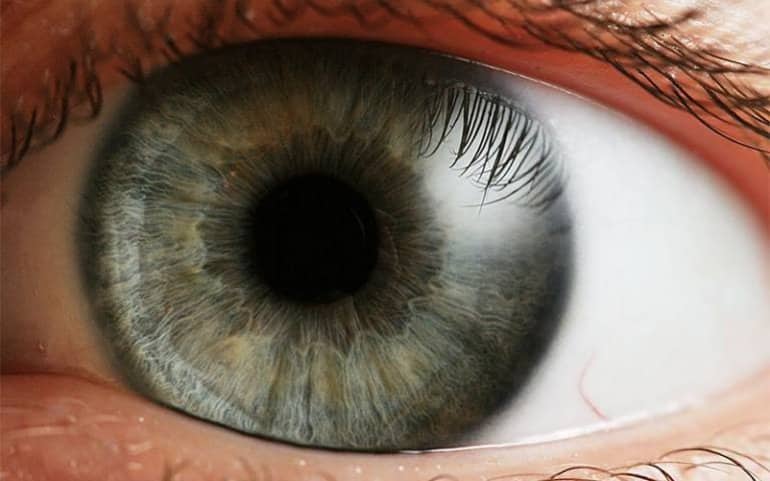Summary: Loneliness, stress, and social isolation as a result of COVID-19 exacerbated and intensified visual hallucinations in blind people with Charles Bonnet Syndrome by 56%.
Source: UCL
People with Charles Bonnet Syndrome, which involves visual hallucinations for people who have lost their sight, have had worsening symptoms during the pandemic, finds a study led by UCL researchers.
The study of 45 patients from Moorfields Eye Hospital between June and July 2020, published in BMJ Open Ophthalmology,reports of harrowing increases in symptoms in over half of participants.
The findings highlight that social isolation, loneliness, lack of exercise and exposure to distressing media over the COVID-19 lockdown have exacerbated and intensified visual hallucinations in 56% of the patients studied.
Lead researcher Professor Mariya Moosajee (UCL Institute of Ophthalmology and Moorfields Eye Hospital NHS Foundation Trust) said: “I had been trying to raise awareness of this condition pre-COVID; it can affect any one with sight loss ranging from young children to the elderly. COVID has impacted every single one of us, but now we have evidence that social isolation is precipitating a scary complication of visual impairment, which may have a major long-term effect on mental health.”
Charles Bonnet Syndrome (CBS) is not curable but there are techniques to manage the condition as well as support. The study’s researchers say that, where possible, increasing social interactions and engaging in physical exercise could help to reduce hallucinations. They say that an increase in healthcare professionals being aware of CBS risk factors is vital to diagnose more effectively. This leads to better strategies to promote patients being able to manage their condition.
The study publication coincides with increased public discussion of CBS, as an established character on Coronation Street, Johnny, began to hallucinate due to his sight loss from optic neuritis. In this week’s episode, the character is scared, isolated and afraid that people think that he is ‘going mad’.

Esme’s Umbrella, the UK’s CBS campaign has been working tirelessly since it was founded by Judith Potts in 2015 to raise awareness of the condition. Potts, who is a co-author on the researcher paper, said: “Sadly it is often overlooked as a mental health condition or otherwise and is therefore not managed effectively. I am so pleased that our voice is now being heard and the horror of the condition is being recognised not only on national TV but also in this latest study.
“My dream is that anyone experiencing CBS will not be afraid to go to their doctor and when they do, they will be diagnosed quickly. COVID-19 has added to the situation in negative way as highlighted in the study.”
The study was supported by the NIHR Moorfields Biomedical Research Centre, Thomas Pocklington Trust and Wellcome.
Another study by a UCL researcher, published last month, found that the visual hallucinations experienced by people with CBS can stem from spontaneous activity in the brain’s visual centres.
About this visual hallucinations research news
Source: UCL
Contact: Chris Lane – UCL
Image: The image is credited to UCL
Original Research: Open access.
“Exacerbation of visual hallucinations in Charles Bonnet syndrome due to the social implications of COVID-19” by Mariya Moosajee et al. BMJ Open Ophthalmology
Abstract
Exacerbation of visual hallucinations in Charles Bonnet syndrome due to the social implications of COVID-19
Objective
Charles Bonnet syndrome (CBS) occurs secondary to sight loss, characterised by spontaneous visual hallucinations. Symptom manifestation can be influenced by social isolation. This research aims to evaluate the effect of the COVID-19 pandemic lockdown on patients with CBS.
Methods and analysis
A prospective cross-sectional survey of 45 individuals with active CBS. Open and closed ended questions were used to measure patient-reported features of hallucinatory experiences during the COVID-19 lockdown and perceived episode triggers. Analysis comprised of descriptive statistics, analysis of variance and associations, supplemented with qualitative descriptions.
Results
The survey was operational for 31 days during the COVID-19 pandemic (June–July 2020). The mean (±SD) age of respondents was 69.3 (±18) years and the majority (42.2%) had macular disease. Loneliness during the lockdown was associated with changes in the nature of visual hallucinations (p=0.04). Individuals experiencing greater loneliness were, on average, older than those with no changes to their feelings of loneliness (mean age 73.3±17 vs 60.2±19 years; p=0.03). Despite experiencing greater feelings of loneliness (67%), most individuals (60%) had not accessed support services for this reason.
Conclusions
Around half of respondents in this survey experienced exacerbation of visual hallucinations during the COVID-19 pandemic, which may partly be explained by loneliness and/or environmental triggers. We provide suggestions to promote effective patient self-management of symptoms.






